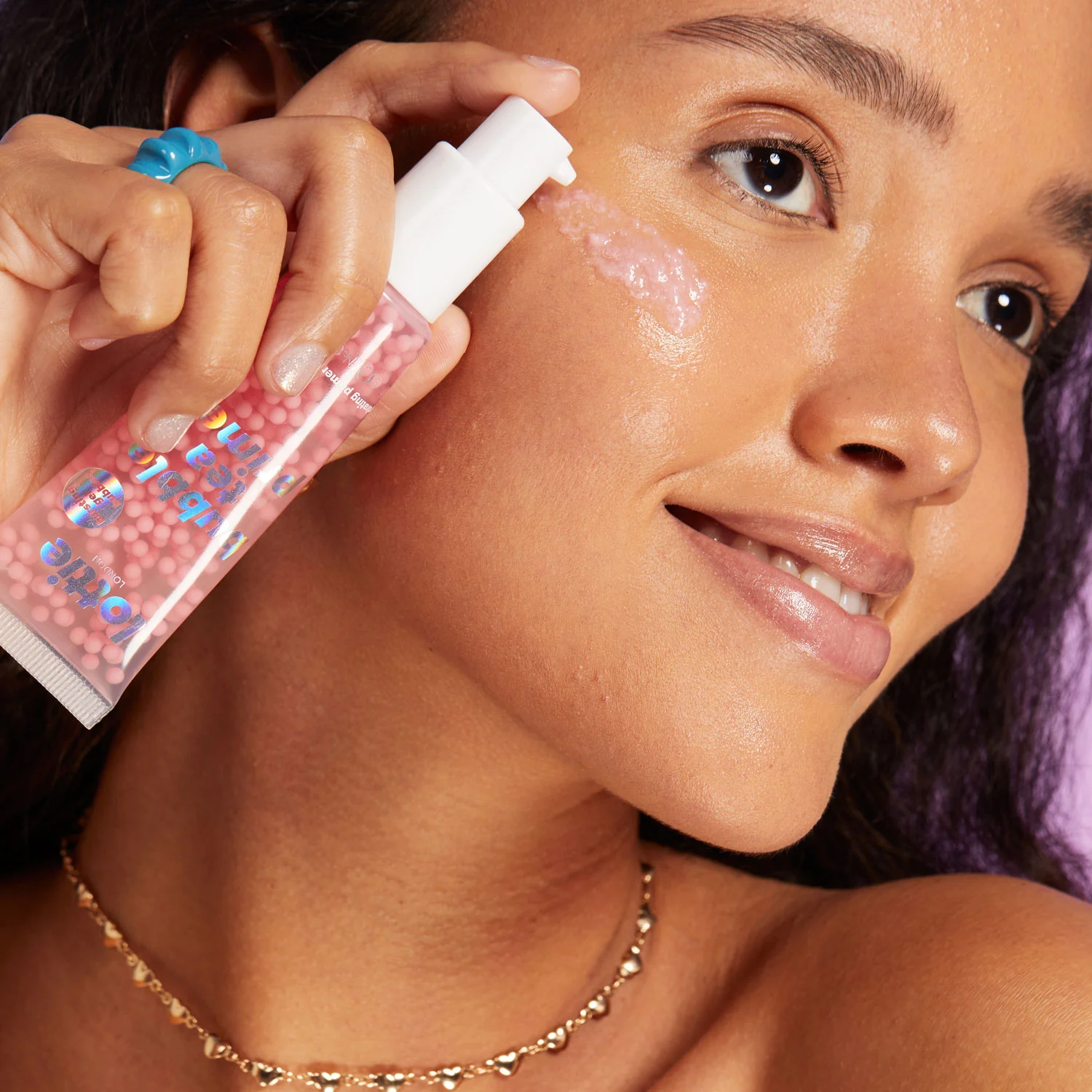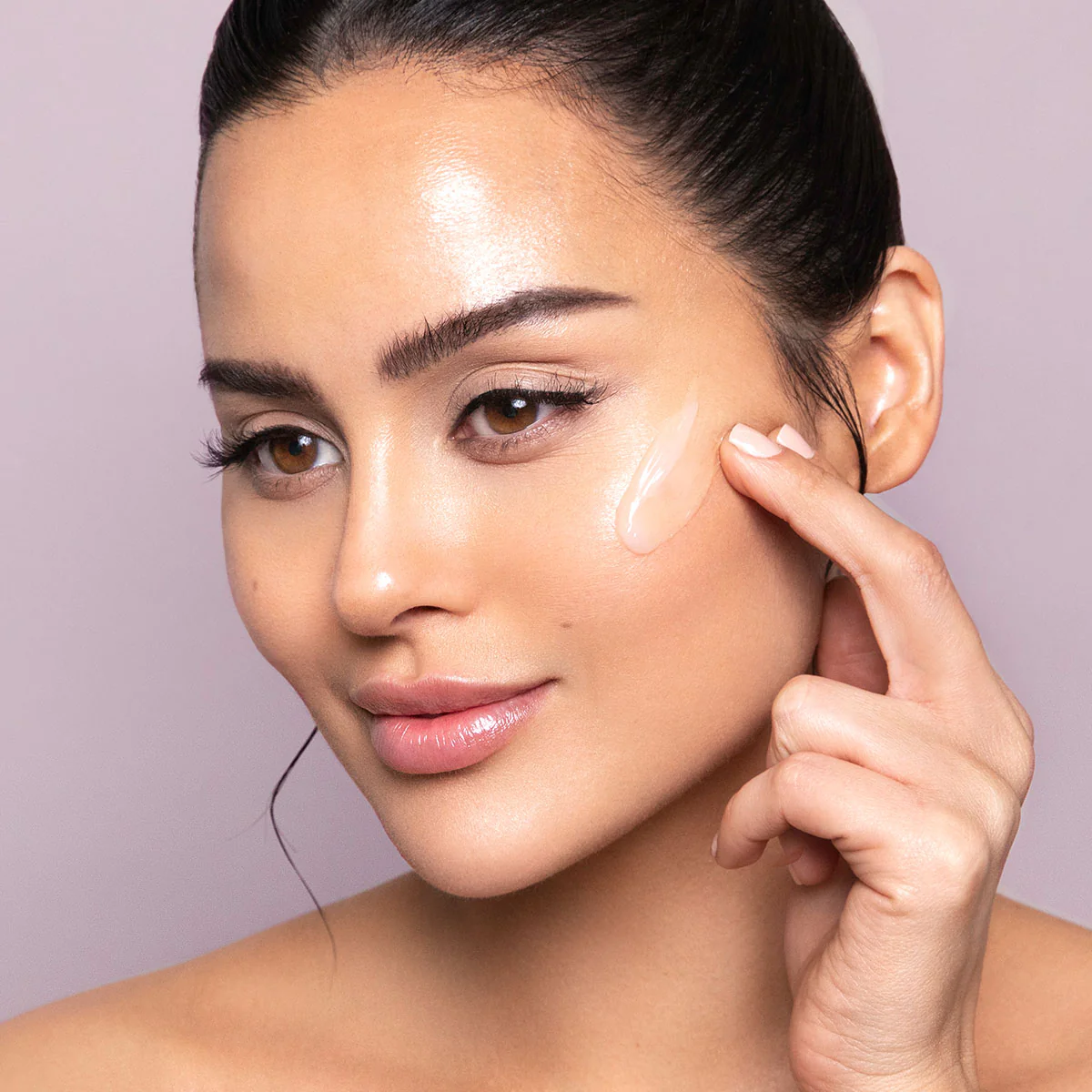
Primer for Oily Skin: Unlock Flawless Makeup
What Is Primer and Why It’s Essential for Oily Skin
Primer acts as a base layer for makeup. It creates a smooth canvas for foundation and other products. For oily skin, primer is particularly crucial. It helps control excess sebum production throughout the day. A good primer can minimize the appearance of pores and fine lines. It also extends makeup wear time significantly. Oily skin types often struggle with makeup longevity.
Primer addresses this issue head-on. It forms a barrier between the skin and makeup. This barrier prevents oils from breaking down cosmetics prematurely. The result is a more polished, longer-lasting makeup look. Primer also offers additional skincare benefits. Many formulas include ingredients that nourish and protect the skin. This makes primer a multitasking product for oily skin types.
Choosing the Right Primer for Oily Skin
Selecting the appropriate primer is key for oily skin. Look for oil-free or mattifying formulas. These types of primers are specifically designed to combat excess shine. Ingredients like silica and clay work wonders for oil absorption. Salicylic acid in primers can help prevent breakouts. Avoid primers with heavy oils or emollients. These can exacerbate oiliness and clog pores.
Water-based primers are often an excellent choice for oily skin. They provide hydration without adding extra oil. Consider primers with a slightly tacky finish. This texture helps grip makeup for extended wear. Some primers offer color-correcting properties. Green-tinted primers can neutralize redness often associated with oily skin.
Primers with a slight tint can even out skin tone. This allows for lighter foundation application. Always check the ingredient list for potential irritants. Oily skin can be sensitive, so patch testing is recommended. Opt for non-comedogenic formulas to prevent pore clogging. The right primer will feel lightweight yet effective on the skin.

Application Techniques for Maximum Effectiveness
Proper application is crucial for primer effectiveness. Start with clean, moisturized skin. Allow moisturizer to fully absorb before applying primer. Use a small amount of primer. A pea-sized dollop is usually sufficient for the entire face. Begin application in the T-zone. This area typically produces the most oil. Use gentle, circular motions to work the primer into the skin.
Avoid pulling or tugging on the skin during application. Pay extra attention to areas with visible pores or fine lines. These areas benefit most from primer’s smoothing effects. Allow the primer to set for a minute before applying foundation. This ensures optimal adhesion of subsequent makeup products. Consider using a brush or sponge for even application.
Fingers can work well too, but ensure they’re clean. Some primers work best when patted into the skin. Others perform better with a smoothing motion. Experiment to find the best technique for your chosen product. Remember to prime the eyelids if using eyeshadow. This prevents creasing and fading throughout the day. Don’t forget often-overlooked areas like the sides of the nose. These spots can get oily and benefit from primer application.

Top Ingredients to Look for in Oily Skin Primers
Certain ingredients excel at managing oily skin concerns. Silica tops the list for its oil-absorbing properties. It creates a smooth, matte finish without drying the skin. Kaolin clay is another powerful oil-absorbing ingredient. It helps control shine throughout the day. Look for primers containing niacinamide. This ingredient regulates sebum production and minimizes pores.
Salicylic acid in primers offers mild exfoliation. It helps prevent clogged pores and breakouts. Zinc oxide provides oil control and sun protection. It’s an excellent multitasking ingredient for daytime primers. Hyaluronic acid offers oil-free hydration. It keeps the skin balanced without adding shine. Tea tree oil has antibacterial properties. It’s beneficial for acne-prone, oily skin types.
Vitamin E acts as an antioxidant. It protects the skin from environmental damage. Glycerin provides lightweight moisture. It helps prevent the skin from overproducing oil. Dimethicone creates a smooth, pore-blurring effect. It also helps control oil without clogging pores. Look for primers with a combination of these ingredients. They work synergistically to address multiple oily skin concerns.
Common Mistakes to Avoid When Using Primer
Several pitfalls can diminish the effectiveness of primer. Using too much product is a frequent error. Excess primer can pill or ball up under makeup. Applying primer to dirty skin reduces its efficacy. Always cleanse thoroughly before primer application. Skipping moisturizer is another mistake. Even oily skin needs hydration to stay balanced. Choosing the wrong primer formula can worsen oiliness. Oil-based primers are generally unsuitable for oily skin types.
Rushing the application process is counterproductive. Take time to work the primer into the skin properly. Forgetting to prime certain areas leads to uneven results. Ensure full face coverage, including often-missed spots. Applying foundation too soon after primer is problematic. Give the primer time to set for optimal performance. Using expired primer can irritate the skin. Check product expiration dates regularly. Neglecting to remove primer thoroughly at night is harmful.
It can lead to clogged pores and breakouts. Overusing mattifying primers can dehydrate the skin. This triggers increased oil production as compensation. Mixing too many products with the primer can cause issues. Stick to compatible formulas for best results. Avoid touching the face after applying primer. This introduces bacteria and oils from the hands.

Integrating Primer into Your Skincare and Makeup Routine
Incorporating primer effectively enhances overall skin and makeup appearance. Start with a gentle, oil-free cleanser. Follow with an alcohol-free toner to balance the skin’s pH. Apply a lightweight, oil-free moisturizer. Allow it to absorb fully before moving on to primer. Use sunscreen if your primer doesn’t offer SPF protection. Wait a few minutes before applying primer over sunscreen.
Choose a primer that complements your foundation formula. Water-based primers work best with water-based foundations. Apply primer in thin, even layers. Build up coverage only where needed. Follow with foundation, using a light hand. The primer allows for less foundation usage overall. Set makeup with a translucent powder for extra oil control. Focus powder application on the T-zone area. Consider using a setting spray for prolonged wear.
Choose an alcohol-free formula to avoid drying the skin. Touch up throughout the day with blotting papers. This removes excess oil without disturbing makeup. Cleanse thoroughly at night to remove all traces of primer. Follow with your regular nighttime skincare routine. Exfoliate 1-2 times a week to prevent primer buildup. This ensures smooth application and prevents clogged pores. Adjust your primer usage seasonally. Oily skin may need less primer in cooler months. Always patch test new primers before full-face application. This helps avoid potential allergic reactions or breakouts.

Advanced Tips and Tricks for Oily Skin Primer Mastery
Mastering primer application elevates the entire makeup routine. Try the “sandwich” method for extreme oil control. Apply a mattifying primer, then a thin layer of powder, followed by another layer of primer. This creates a super-matte, long-lasting base. Experiment with color-correcting primers. Use green to neutralize redness, lavender for sallowness, or peach for dark spots. Mix a small amount of primer with foundation. This creates a custom, long-wearing tinted moisturizer.
Use an eye-specific primer on oily eyelids. This prevents eyeshadow creasing and smudging. Apply primer with a damp beauty sponge for a more natural finish. This technique works well for lightweight, water-based primers. Try using primer as a standalone product on no-makeup days. It offers a smooth, matte finish without full makeup.
Customize your primer by mixing formulas. Combine a mattifying primer with a luminous one for a balanced effect. Use primer to spot-treat oily areas if you have combination skin. This prevents over-drying less oily parts of the face. Apply a thin layer of primer over makeup for mid-day touch-ups. This refreshes the makeup and absorbs excess oil. Consider keeping a mini primer in your bag for on-the-go application. This allows for quick touch-ups throughout the day.
Use a primer stick for precise application on targeted areas. This works well for controlling oil around the nose or on the chin. Try a priming moisturizer for a streamlined routine. These products combine hydration and priming benefits. Experiment with different primer textures. Gels, mousses, and serum-like primers offer varied benefits for oily skin.

